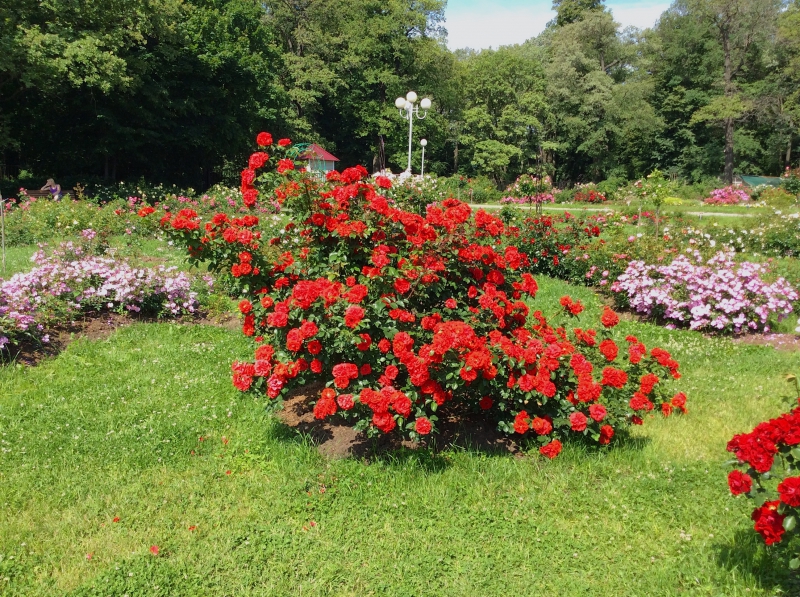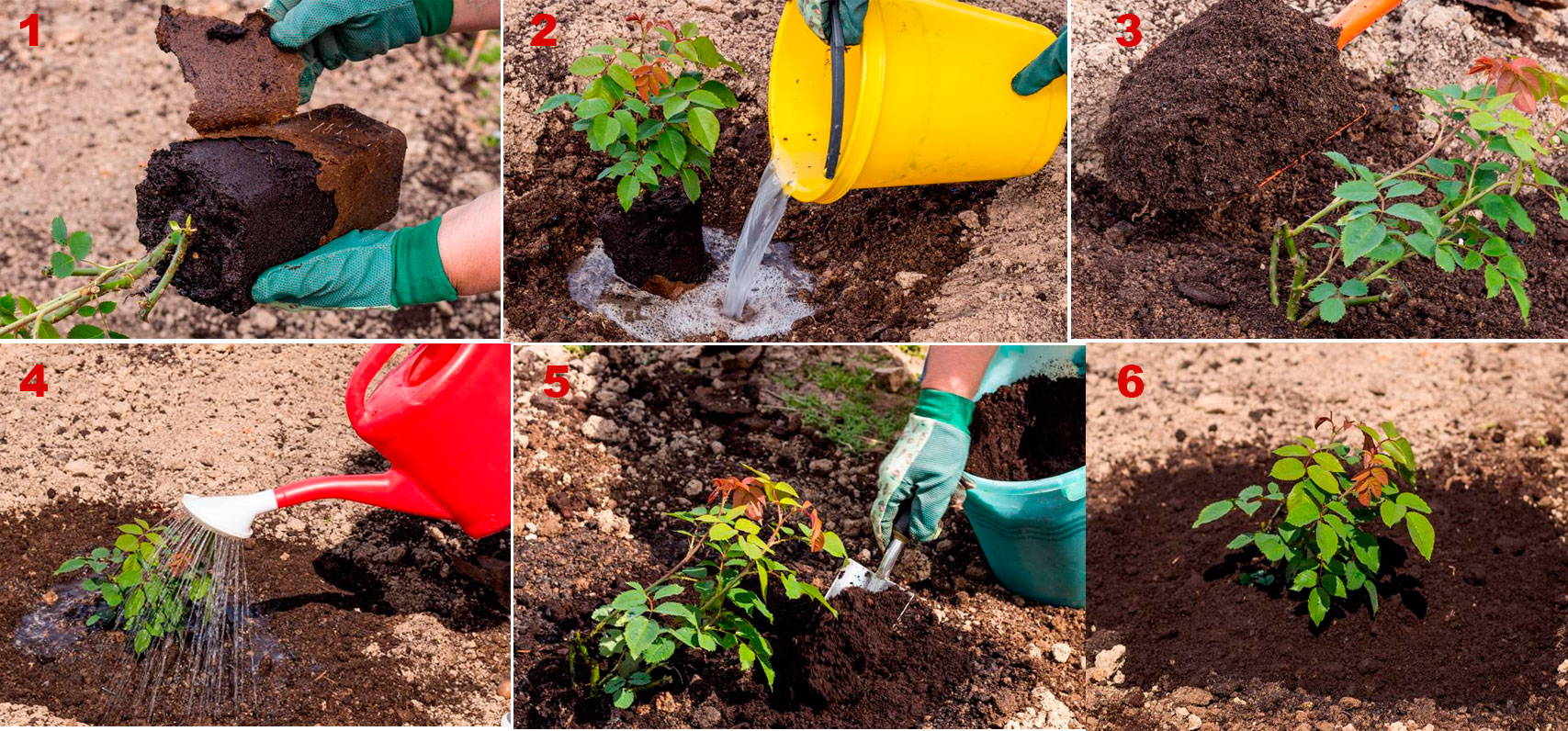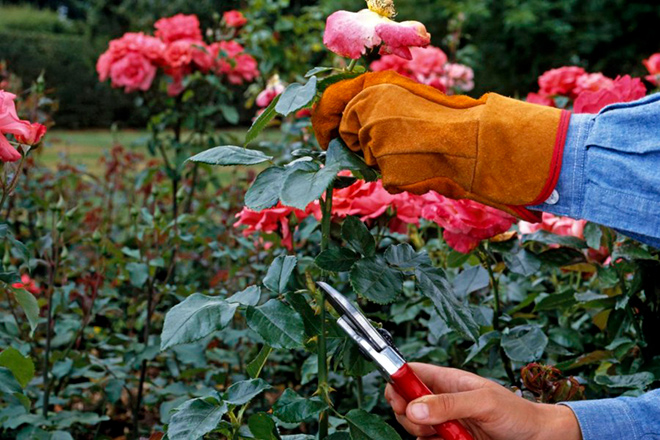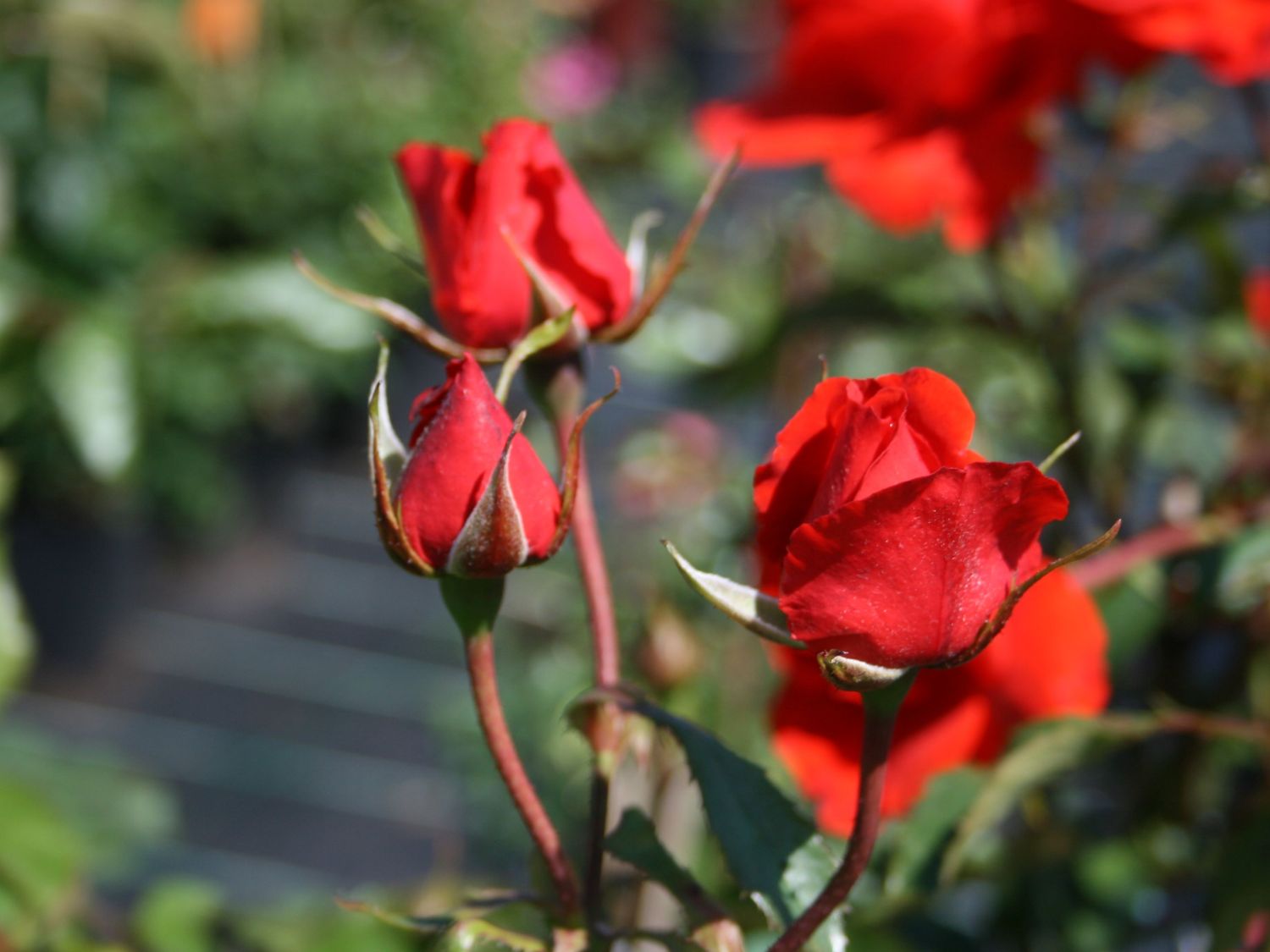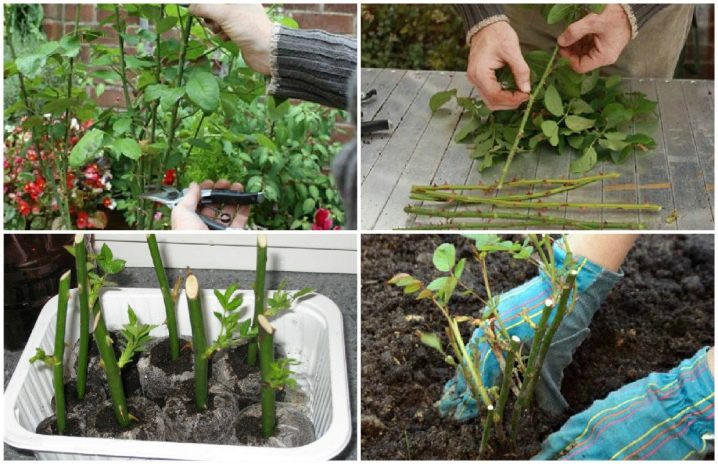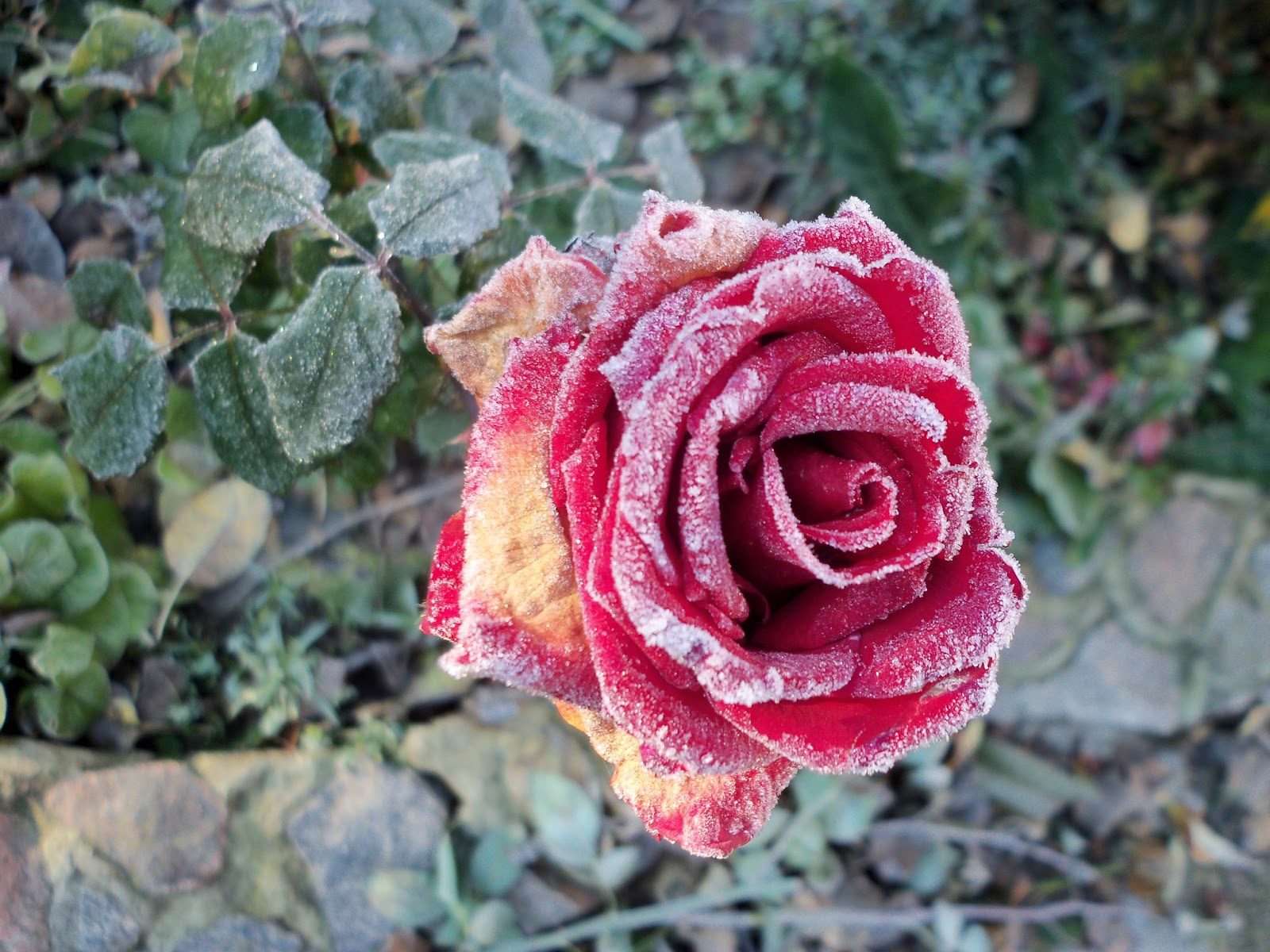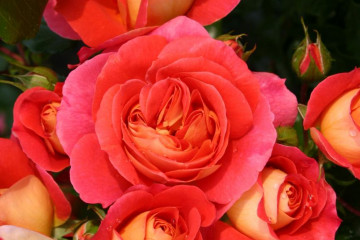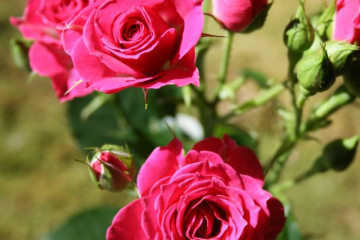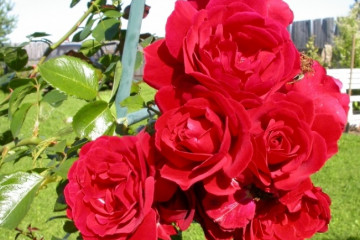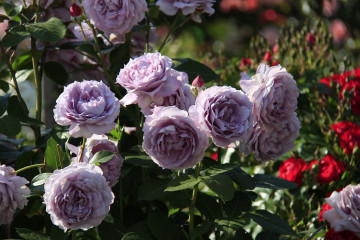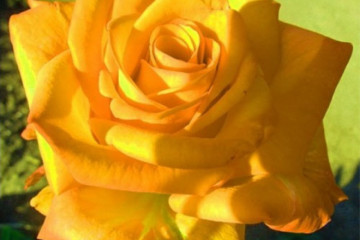Rosa Kordes Brillant
Content:
Rosa Cordes Brilliant is a bright, scarlet representative of one of the most beautiful flowers on earth. Today the varieties of Cordes are considered the best of all. The assortment includes a huge variety of species with different descriptions, shape, size and shade of inflorescences. Shrubs Diamond Corsair in the last five years have occupied a leading position among all plants in the garden, as the most persistent, colorful and abundantly blooming species.
Description, history of creation
Rose Brilliant was created by Wilhelm Cordes. All his life he was actively involved in cultivation, breeding of new varieties, caring for them and breeding hybrids. I tried to improve my appearance every time, working on its characteristics. Cordes founded his own company in 1887. At first he decided to sell English and French varieties. However, after some time, he came to grips with breeding - the crossing of species and the creation of new ones.
The German beauty Brilliant Red Cordes received a special award for her unique characteristics. The breeder's company has an ADR-certificate, due to the high assessment of the quality of roses, appearance and aroma.
Shrub description:
- 1.5 to 3 meters high,
- Large, bright green foliage,
- Flowers are collected in peony inflorescences.
Advantages and disadvantages
Distinctive features of the variety are:
- Ability to adapt to any weather conditions,
- Strong resistance to pests and diseases,
- Easy care,
- A vigorous shrub that blooms profusely with a vibrant color palette.
Of the shortcomings, one can single out only the fact that over time the bottom of the bush can become bare, so you will have to think about additional decoration with shorter crops.
Use in landscape design
Rose Red Diamond is most often used in landscape design. It will perfectly decorate a hedge or can be planted as a single plant. Grows well in breadth. The type of park variety - "Sympathy Stars", is distinguished by bright cherry buds and their ability not to fade in the sun.
Growing
Rose Red Diamond is easy to grow, this is one of its main advantages. For successful growth and further development, it is worth buying seedlings only from proven nurseries.
Optimal time and place
Planting is done in late spring - early summer, or in autumn. Best of all in May-June or already in September-October.
Planting material - pre-purchased seedlings or rooted cuttings, they must be planted in a lighted place, preferably where there is no strong scorching sun.
Preparation of soil and planting material
Seedlings are bought in advance (1-2 years old), it is enough to simply transplant them into open ground after they have been in the water for about a day. As for the cuttings, they must be well rooted so that they can take root easily and naturally in the new area.
The soil is prepared in advance: before direct planting, dig a hole 1-1.5 m deep and process it. This means filling the drainage layer (crushed stone), adding top dressing and sprinkling the earth. It is good to loosen the soil, if necessary, clear of stones.
Step by step process
After the soil is prepared, you can start planting:
- Inspect the seedlings or cuttings carefully. If present, bad shoots are cut off. Cuttings should be 15-20 cm tall. A few hours before planting, you can place the planting material in a weak solution of "Kornevin".
- The seedlings should be at least 50 cm apart.
- Planting material is placed in the prepared hole, sprinkled with earth, it is not strongly rammed. Moisturizes, but not excessively.
Care
Hybrid tea rose Brilliant is a very unpretentious variety. This is what the breeder sought when breeding.
Watering and humidity
Like any rose, Cordes Brilliant loves moderate watering, no stagnation of moisture in the soil. In terms of humidity, it is neutral, so there is no need to specially spray from a spray bottle.
Top dressing and soil quality
It is important that the soil is slightly acidic. In alkaline soil, the rose will begin to wither and develop poorly. In the first three years, the land should be well loosened, it is worth regularly introducing mineral fertilizing (3-4 times in the summer) and rotted manure (before flowering).
Pruning and replanting
One of the most important care issues is pruning old shoots, both in spring and autumn. This promotes good shrub formation and bud setting in lighter conditions.
The transplant is carried out no earlier than 2-3 years after the first disembarkation in open ground or in the presence of a disease.
Wintering
If the culture is grown in the northern regions, it must be insulated for the winter. In other cases, it is recommended to mulch the soil for wintering, but it is not necessary.
The most winter-hardy varieties of "Kordes" for the Moscow region are:
- Password,
- Beverly,
- La Perla,
- Kupfer Körnigen,
- Marvel.
Bloom
According to many gardeners, the Diamond rose blooms profusely throughout the season.
It is noteworthy that, even if you do not have time to cut off the faded buds, new ones can be tied.
A period of activity and rest
The active growing season begins in May, when the buds are tied, flowering occurs in late May - June and lasts until the end of September. Then the faded buds are removed, the shoots are shortened, and the culture is prepared for wintering.
Care during and after flowering
Before flowering, the shrub must be fertilized. The best solution in this matter would be the introduction of nitrogen fertilization or rotted manure. The stems can be treated with sodium humate to activate lateral branching. During the flowering period, the rose should be well watered and regularly loosened the soil.After it has faded, prune and prepare for the onset of cold weather: sprinkle with spruce branches, humus and loose earth.
Why does not a rose bloom
The tall Red Brilliant shrub tends to bloom profusely and repeatedly with proper care. If the buds are not set, you need to revise:
- Landing place and transplant,
- The issue of watering and the presence of excessive moisture in the soil,
- The presence of pests or crop diseases.
Reproduction
Reproduction often occurs by cuttings. It is necessary to choose strong and sturdy cuttings so that the rooting process is quick and easy.
It is also permissible to propagate by seeds, layering or grafting. Growing with a seed is a very time-consuming process that is only possible under certain conditions. Vaccination is usually done on rose hips.
When to conduct
The best breeding season is considered to be the beginning of spring, when the culture has successfully overwintered and the frost is gone.
A cutting of a mature shoot is taken, about 10 cm. It is planted in prepared moist soil. After some time, it sprouts, which means it has taken root. It is planted in the autumn. Within three years, stems and a well-developed root system will form.
Propagated by layering in spring, bending young shoots to the ground. In the fall, the rooted sprouts are transplanted.
Disease and pest control methods
The Cortez diamond is very resistant to various diseases and pests, but disease prevention does not hurt. It is carried out in the spring, spraying with a solution of ferrous sulfate (Fundazol, Topaz).
If the buds have suffered from aphids or ticks, then after wintering it is necessary to treat the foliage with urea or solutions "Iskra", "Actovit" or "Fitoverm".
The magnificent varieties of Cordes are a real find. There is not a single type of culture that wraps around garden arches, gazebos or decorates flower beds like this. A hedge not only fences off a section of the garden, but also serves as its decoration.
Video
